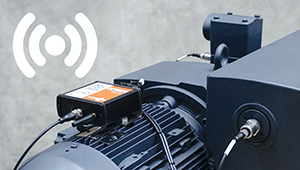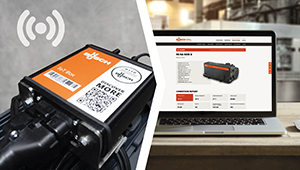
Production downtime is one of the biggest risks in the manufacturing industry. From equipment failures to shortages of raw materials, any production downtime can result in major losses in revenue and market share. There are two types of downtime: planned and unplanned.
Planned downtime is a scheduled shutdown of manufacturing equipment or processes to perform maintenance, inspections, repairs, upgrades or manufacturing setups. It is essential to plan downtime for maintenance to keep your equipment in its optimum condition and to avoid unplanned downtime. Although planned downtime interrupts your manufacturing process, you are still in control of productivity processes.
Unplanned downtime occurs when there is an unexpected shutdown or failure of your manufacturing equipment or process. It causes foodstuffs to spoil if they are not packaged, together with expensive delays in production and delivery schedules. Additionally, when operations are unstable, it is more difficult to adhere to environmental regulations and comply with sustainability measures. This could result in an increase in environmental incidents. Thus, preventing production downtime is key to ensuring productivity. Follow our seven tips to reduce machine downtime in your production line.

Develop a system for quickly identifying and resolving production issues
The system should gather and analyse data that gives insight into the equipment’s total maintenance requirements. Interpretation of the data can help your teams resolve production issues by carrying out preventive maintenance. The implementation of such a system allows factories to cut down on time lost due to production issues, and prevent costly unplanned downtime by alerting employees of possible upcoming equipment failures.
Use predictive analytics to identify potential problems before they occur
Predictive analytics detect patterns in real-time machine data that could lead to the onset of a problem. Data analytics can inform you weeks in advance about which parts of a machine are likely to fail. This allows you to plan your maintenance schedules and order spare parts in advance, effectively reducing downtime and lessening the likelihood of issues reoccurring.
Implement a preventive maintenance programme
Preventive maintenance programmes are one of the most effective ways to minimise unplanned machine downtime. You can routinely collect valuable information about your equipment for a systematic maintenance approach. With the right targeted maintenance, you can react to predicted equipment failures or accidents before they occur. By reducing the possibility of unexpected downtime, your staff can focus on more profitable tasks.
Create a system for dealing with glitches and problems as they arise
Having a system that tracks and monitors glitches as they arise allows you to identify the root cause of an issue in your production line. This will enable you to understand how production failures occur and how to prevent them from happening again. This reduces unplanned machine downtime while increasing manufacturing efficiency.
Automate as many processes as possible to reduce human error
Reduce downtime and make your production process more efficient by automating repetitive and tedious tasks that are prone to human error. This will give your staff more time to focus on profitable tasks and develop their skill sets, which will translate into higher profits for your company and show your workforce that they are your most valuable resource.

Train operators on how to properly operate equipment
Training operators to use equipment properly can significantly reduce downtime in your manufacturing process. If operators know how to use equipment correctly, they are less likely to halt production, and can respond faster in emergency situations. Proper training also prevents unplanned downtime caused by human error, and decreases the risk of workplace accidents.
Use intelligent IIoT solutions
Intelligent IIoT solutions help reduce downtime by providing you with a system that quickly identifies and resolves production issues. It tracks and monitors your equipment and process with predictive analytics, enabling you to create a maintenance schedule and order the necessary spare parts ahead of time. Sensors and data analytics enable IIoT to track and monitor performance continuously and process optimisation data from your equipment. This gives you the opportunity to implement preventive maintenance and predict potential issues as they arise, effectively lessening the frequency of planned or unplanned downtime. IIoT also enables the automation of tasks, shortening the time it takes to complete them and ultimately boosting productivity and reducing human errors. Thanks to its user-friendly tools, it is easy to learn how to operate IIoT. Your workforce will be able to use it properly in no time.

© Technews Publishing (Pty) Ltd | All Rights Reserved